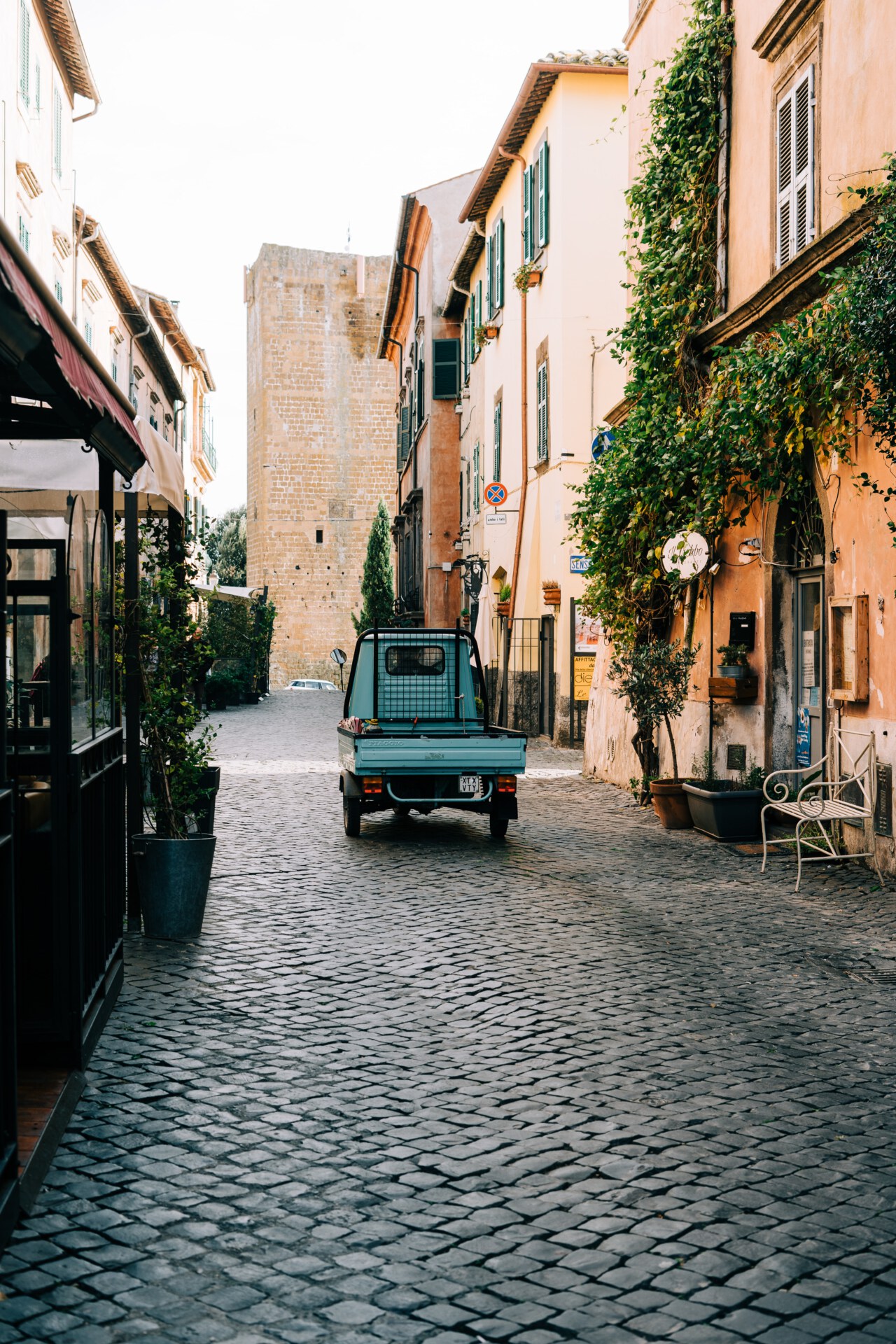Tucked away, on the outskirts of medieval Viterbo’s walled city center, lies the San Pellegrino district. First glances may not be promising: poorly-lit, tight alleys lined with cobblestones and many dead ends appear like an ominous maze. But wander in, following the smells of tartufo and olive oil from the markets, and you’ll find that this part of the city has some of its oldest treasures. This district got its name from the travelers–pellegrini or pilgrims–who trekked from Canterbury, England to Rome on the Via Frangicena. The layout of this quarter certainly doesn’t make sense, but what it lacks in practicality, it makes up for in charm and a rich tradition of artisanal craftsmanship.
Daniella Lai’s ceramic shop is just one of the many gems on the aptly-named Via Pellegrino. Ceramic ornaments depicting oak leaves and animals hang outside her store, and the windows, full of vases and stacked dishware hint at more treasures inside. The shop is covered in cobalt and ivory zaffera ceramics–large plates, dishware, vases nearly as tall as I am. Even more ornaments dangle from ribbons across the shop, and thin, intricate urns tower on the tables. Shelves stuffed with literature on pottery abound.
The atmosphere is warm and friendly, made even more so by Lai herself, and the shop’s open design plan allows you to see her large workshop in the back. While you browse the daily bowls and dishes, you can see Lai and her colleagues working, employing the same methods that have been used for centuries to create the unique Umbrian style called zaffera–distinctive for its color palette.
A type of majolica that originated in the area at the end of the Middle Ages, zaffera is characterized by cobalt blue decoration in relief against a white background. (The term “relief” refers to a technique in pottery in which two separate materials are bonded together to create a raised, detailed look.) The rich blue, or sometimes inky black, color of zaffera pottery is achieved through the use of lead oxide, which melts during firing and causes the color to rise above the glazed surface. Manganese may often be added to the design for fine brown detailing.
Designs typically feature one subject, such as an animal or tree, surrounded by other decorative elements and represent themes like strength, fertility, abundance and love. Lai encourages buyers to connect with her pieces and find a symbol that resonates with them.
First practiced in Florence, Siena and the Romagna region, zaffera became popular in Viterbo and the surrounding villages in the 1400s. Archaeologists determined that zaffera was most common for a short period of just 20-30 years before it went out of style; as the pottery was also quite difficult to produce, many workshops were abandoned. Viterbo’s artisans, however, carried on. In 1251, Viterbo was the first city in Italy to have a dedicated chapter of statute on the regulation of ceramics. Art was a serious and strict business. Says Lai, “The wood-burning ovens for cooking the artifacts could only be turned on in the evening. Even the forms had to be made according to established standards. Anyone who didn’t respect it was punished.”
Archeological digs have found zaffera ceramics deep in the soils of the Tuscia landscape–the same earth and clays that are today used to create the very same pottery. Lai explains that these traces, as well as those of older forms of pottery, exist because “the cities of Lazio have been linked to the territory since the Etruscan and Roman periods. Ceramics have always accompanied us; in fact, [the craft] was born out of food containment needs.”

When she started making pottery over 30 years ago, Lai “was fascinated by how pottery is linked to the transformation of matter. Everything comes from the earth. It is a noble art and it includes the four elements necessary for life on Earth: water, air, earth, and fire.”
A trained ceramicist, Lai opened her shop 25 years ago to preserve the craft and its story. These days, zaffera pottery is few and far between as colorful, more modern ceramics from places like Amalfi and Sicily dominate the market. In Viterbo, there is only one other zaffera shop. Lai hopes to further spread knowledge of these ancient techniques by inviting people to try their hand in her workshop and studio. “Clay is the oldest and most alive material capable of creating expressions of art,” Lai asserts. “Within every piece, even if modest, one can re-read the pages of this story.” As she continues to make zaffera pottery, she writes even more chapters of this unique and oft-forgotten ceramic form.
The cities of northern Lazio have often been overshadowed in the north by Florence’s splendor and in the south by Rome’s eternal charm. They are consistently overlooked by tourists and guidebooks. But Viterbo deserves the spotlight: to walk Via Pellegrino and to visit Lai’s shop, alongside other workshops, shows how the citizens of Viterbo have worked tirelessly to preserve their art and tradition in a changing Italy.
Though I no longer live in Viterbo, my zaffera plate is displayed proudly in my kitchen. It shows an oak tree, symbolic of strength, with abundant leaves and decorative acorns. Like a tree itself, the plate and its craft are deeply rooted in the ancient soils of Viterbo.



